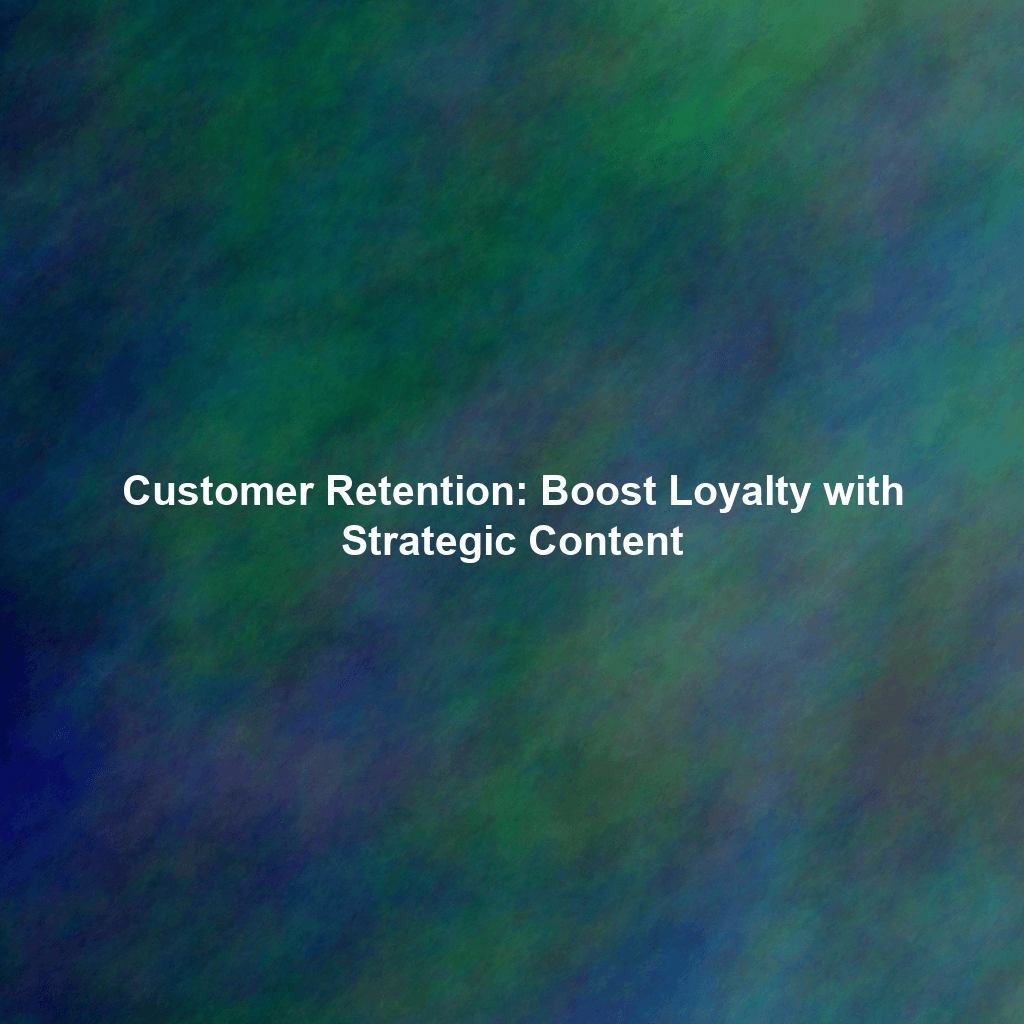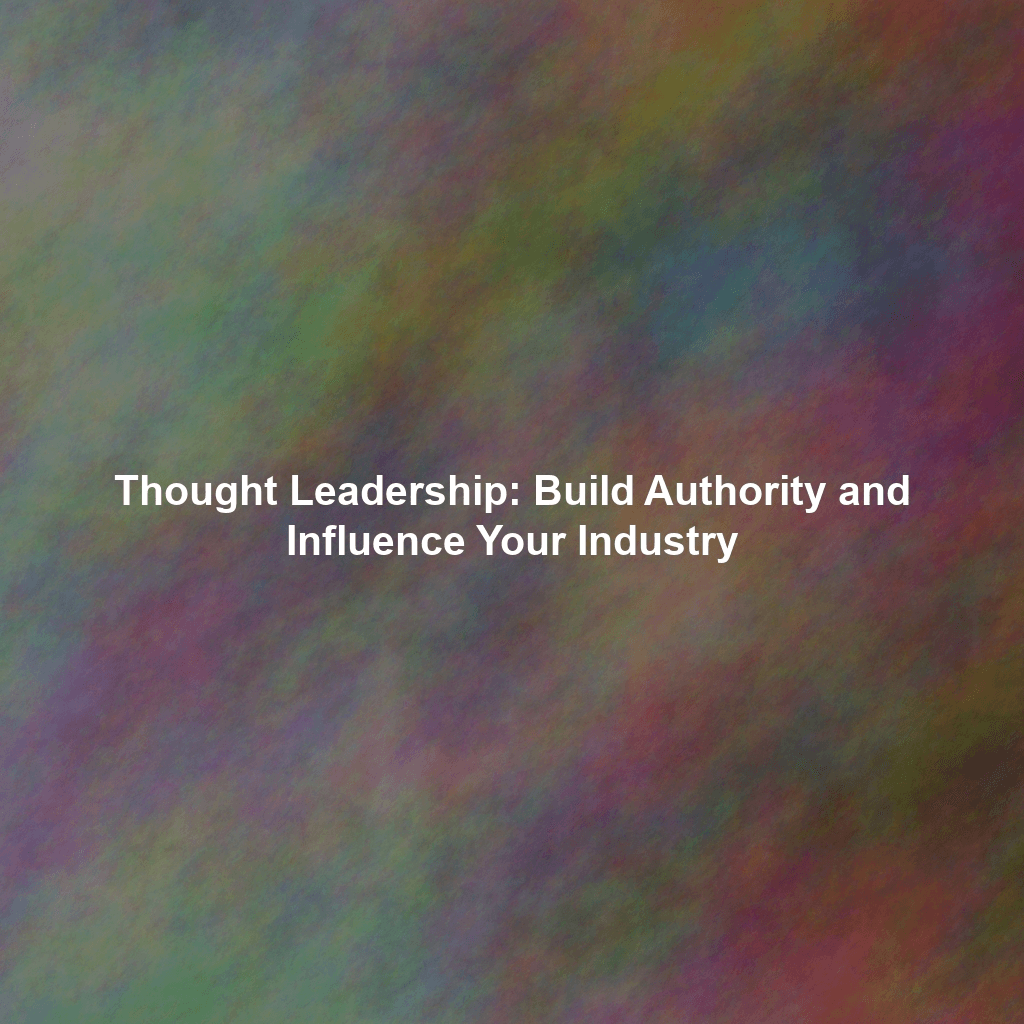The Power of Content: From Acquisition to Retention
Why Content Matters for Customer Retention
Before diving into specific tactics, it’s crucial to understand why content is so effective for retaining customers:
- Building Trust and Authority: Consistent, high-quality content positions you as a trusted expert in your field. Customers are more likely to stick with a brand they perceive as knowledgeable and reliable.
- Providing Value Beyond the Product: Your product or service solves a problem, but content can offer additional value by addressing related concerns, providing helpful tips, and offering insights that enhance the customer’s overall experience.
- Staying Top-of-Mind: Regularly delivering valuable content keeps your brand top-of-mind. When customers need a solution you provide, they’ll be more likely to think of you first.
- Personalization and Relevance: Tailored content demonstrates that you understand your customers’ needs and preferences. This fosters a deeper connection and strengthens their loyalty.
- Encouraging Engagement: Content can spark conversations, encourage feedback, and create a sense of community around your brand. Engaged customers are more likely to remain loyal.
Content Strategies for Improved Customer Retention
Now, let’s explore some practical content strategies you can implement to boost your customer retention rates:
1. Onboarding Content: Setting the Stage for Success
The initial days and weeks after a customer makes a purchase are crucial. This is your opportunity to make a lasting first impression and ensure they have a positive experience. Onboarding content should focus on:
- Welcome Emails: A personalized welcome email is a great way to thank customers for their purchase and provide essential information about getting started.
- Tutorials and Guides: Help customers understand how to use your product or service effectively. Video tutorials, step-by-step guides, and FAQs can be incredibly helpful.
- Knowledge Base: Create a comprehensive knowledge base that answers common questions and provides solutions to potential problems. Make it easily accessible on your website.
- Proactive Support: Anticipate potential challenges and proactively provide helpful tips and resources. This shows customers that you’re invested in their success.
2. Educational Content: Empowering Your Customers
Empower your customers by providing educational content that helps them get the most out of your product or service. This could include:
- Blog Posts: Share valuable insights, industry news, and helpful tips related to your product or service.
- Ebooks and Whitepapers: Offer in-depth guides and reports that explore complex topics in detail.
- Webinars and Online Courses: Provide interactive learning experiences that help customers develop new skills and knowledge.
- Case Studies: Showcase how other customers have successfully used your product or service to achieve their goals.
3. Personalized Content: Making it Relevant
Generic content is unlikely to resonate with your customers. Personalize your content based on their:
- Purchase History: Recommend related products or services based on their previous purchases.
- Demographics: Tailor your messaging to their specific age, location, and other demographic factors.
- Interests: Deliver content that aligns with their stated interests and preferences.
- Engagement Level: Offer different content to active and inactive customers.
Using email segmentation, dynamic website content, and personalized recommendations are all effective ways to deliver more relevant content.
4. Exclusive Content: Rewarding Loyalty
Make your customers feel valued by offering exclusive content that’s only available to them. This could include:
- Early Access to New Products: Give loyal customers a sneak peek at new products or features before they’re released to the general public.
- Discounts and Promotions: Offer exclusive discounts and promotions to reward their loyalty.
- Members-Only Content: Create a members-only area on your website with exclusive content, such as webinars, tutorials, and articles.
- Loyalty Programs: Implement a loyalty program that rewards customers for their repeat business.
5. Community Building Content: Fostering Connection
Create content that fosters a sense of community around your brand. This could include:
- Forums and Online Communities: Create a forum or online community where customers can connect with each other, ask questions, and share their experiences.
- Social Media Groups: Create a private social media group for your customers where they can interact with you and other customers.
- User-Generated Content: Encourage customers to share their own content, such as reviews, testimonials, and photos of them using your product or service.
- Contests and Giveaways: Host contests and giveaways that encourage customers to engage with your brand and each other.
6. Feedback and Iteration: Continuous Improvement
Don’t just create content and hope for the best. Actively solicit feedback from your customers and use it to improve your content strategy. This could include:
- Surveys: Send out surveys to gather feedback on your content.
- Polls: Use polls to gauge customer interest in different topics.
- Comments and Reviews: Monitor comments and reviews on your website and social media channels to understand what customers are saying about your content.
- Analytics: Track key metrics, such as page views, engagement rates, and conversion rates, to understand what content is performing well and what needs improvement.
Measuring the Success of Your Content Retention Efforts
How do you know if your content marketing strategy is actually improving customer retention? Here are some key metrics to track:
- Customer Retention Rate: The percentage of customers who remain customers over a specific period.
- Churn Rate: The percentage of customers who stop doing business with you over a specific period.
- Customer Lifetime Value (CLTV): The total revenue a customer is expected to generate over the course of their relationship with your business.
- Customer Engagement: Track metrics such as website visits, social media engagement, and email open and click-through rates.
- Customer Satisfaction (CSAT): Measure customer satisfaction using surveys and feedback forms.
- Net Promoter Score (NPS): Measure customer loyalty by asking customers how likely they are to recommend your business to others.
By monitoring these metrics, you can gain valuable insights into the effectiveness of your content retention efforts and make adjustments as needed.
Final Thoughts: Content as a Retention Engine
Content marketing isn’t just about attracting new customers; it’s also a powerful engine for customer retention. By providing valuable, relevant, and engaging content, you can build stronger relationships with your existing customers, foster loyalty, and reduce churn. Invest in a well-defined content strategy that prioritizes customer retention, and you’ll reap the rewards in the form of increased customer lifetime value, positive word-of-mouth, and a thriving business.
Remember to focus on understanding your customer’s needs and desires, tailoring your content accordingly, and continuously improving your strategy based on feedback and analytics. By doing so, you’ll transform your content from a simple marketing tool into a powerful asset that drives customer loyalty and long-term success.
“`
 Skip to content
Skip to content

